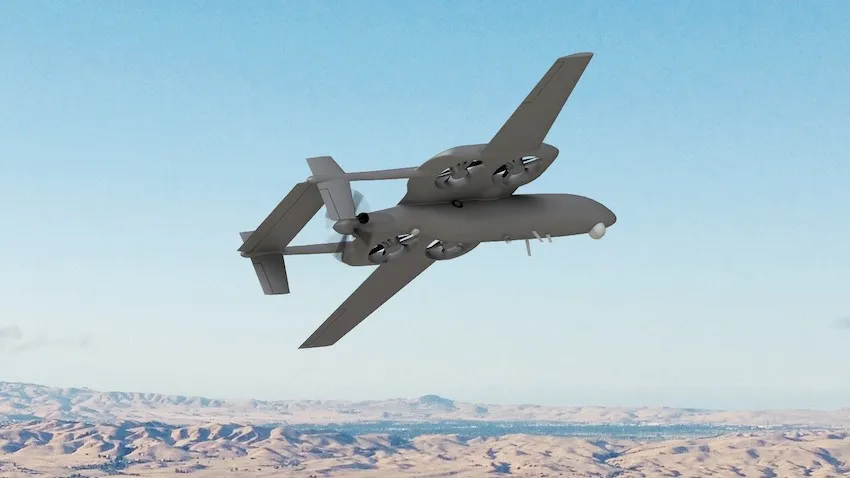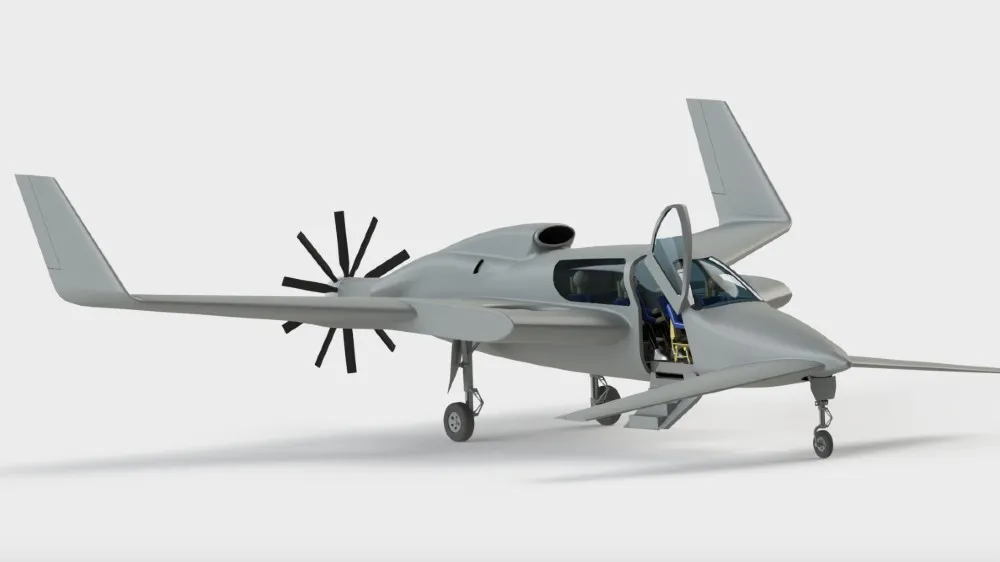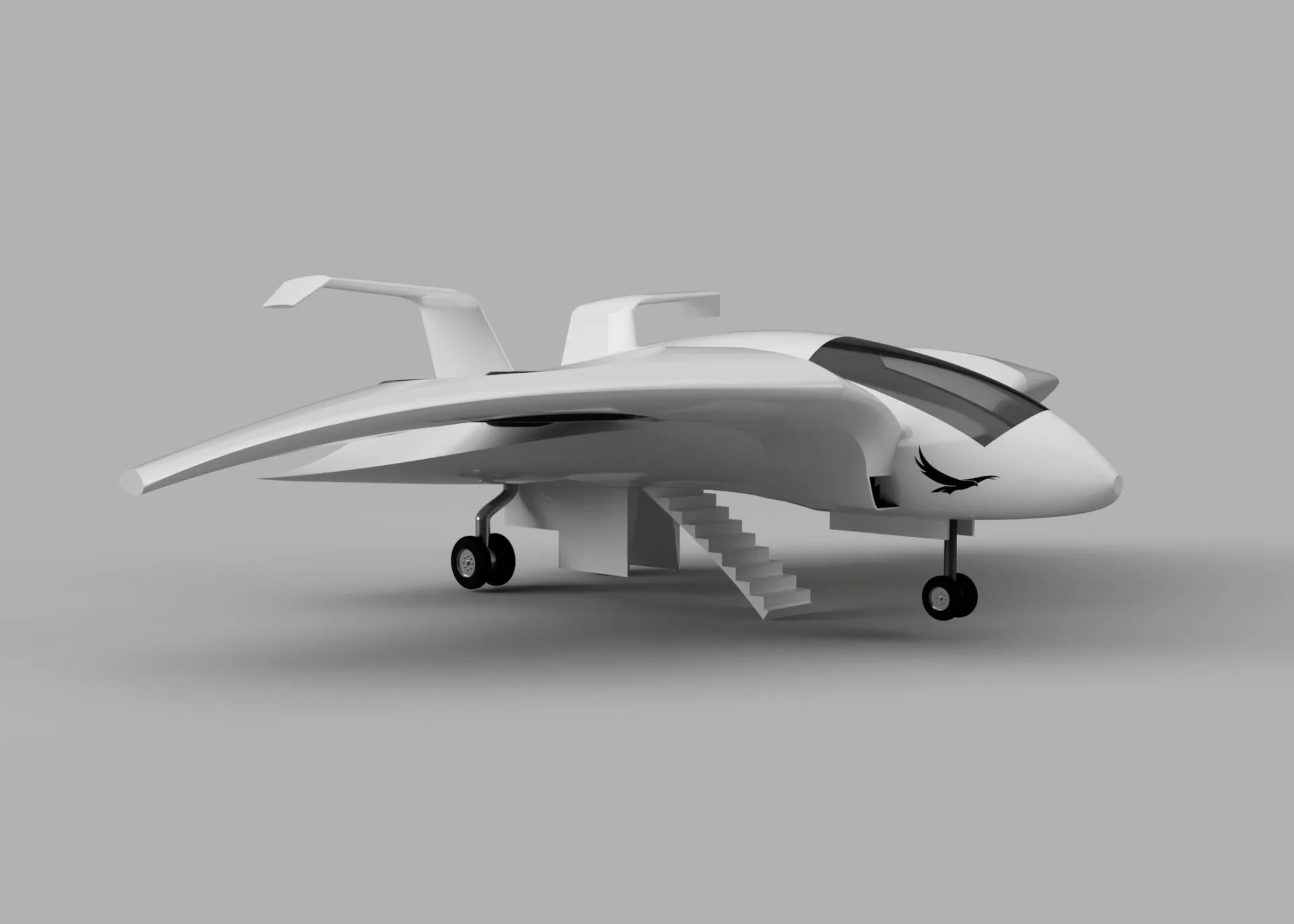A separate propeller provides forward thrust, and Vox’s fixed wings have four embedded rotors for vertical takeoff.
For more than 30 years, Vox has been developing vertical takeoff and landing aircraft, starting with sketches in 1989. Initially a sci-fi concept, it has evolved into several patents, scaled prototypes, and now final assembly of its airframe has begun, and testing is expected to begin next year.

“Our aircraft can travel at turboprop speeds and land on nearly any helipad in the world,” COO and EVP of engineering to Vox, Brian Morgan, says. “Like any helicopter, it provides the flexibility and ease of point-to-point travel, but at two to three times the speed, with more comfort and the ability to fly above weather, all while burning about half the fuel of the same-sized rotorcraft performing the same mission.”
Four turbofans are embedded in the “strake” wings of the Vox, providing lift for takeoffs and landings while offering aerodynamic and safety advantages. A rear rotor system provides forward thrust. “We preferred a fixed-wing design,” adds Morgan. “It provides dedicated lift and thrust so you’re never unsupported.
As part of the hybrid power train, electric lift rotor assemblies will be used, while turboshaft thrusters will still be used to maximize efficiency and range. This aircraft has about eight minutes of power and about the same amount in reserve. In forward flight, the aircraft recharges itself.
“A mix of multiple systems will work together to optimize power needs and flexibility for the different modes of flight,” Morgan tells. “The precise combination and scaling of each are dependent on the mission profile.”

The VTOL will travel about 400 miles at 300 knots with an 800-pound load with conventional fuel, but starting with conventional fuel. A 250kW all-electric version will have a range of about 180 to 200 miles. The large fixed wing also creates a 17-1 glide ratio, providing additional safety in the event of engine failure.
By 2026, Vox hopes to achieve certification and get airborne with its dual-power system and enclosed rotors. The company is developing everything from drone-sized versions to a mid-size business jet.
“We’re a fixed-wing VTOL with long range and high speed,” reveals Morgan. “We looking to fit into the regional travel portion of the market.”



